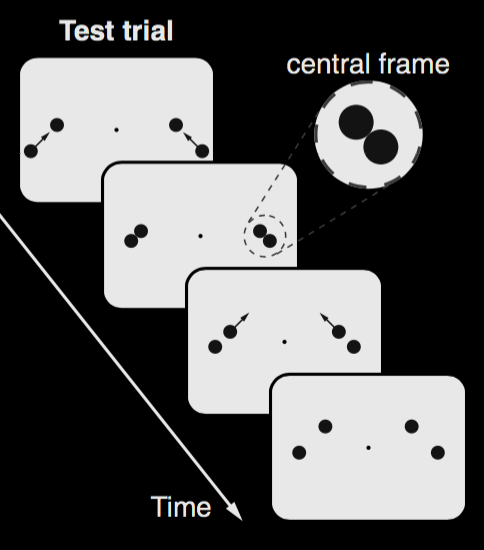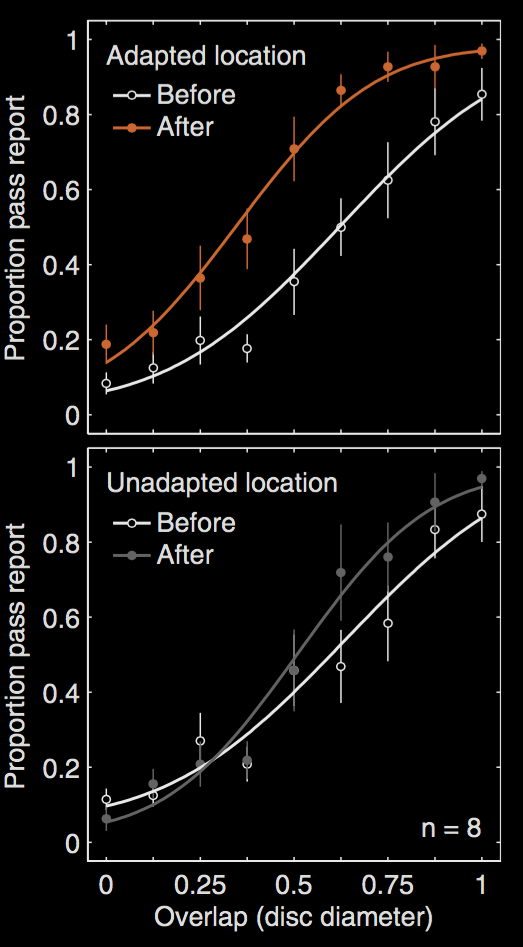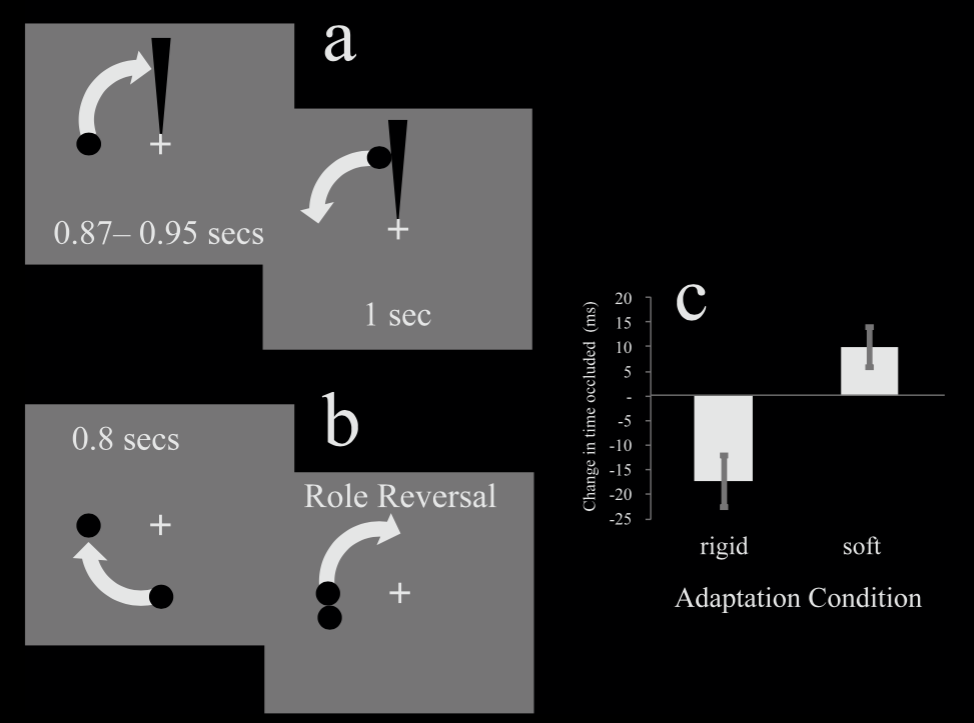Click here and press the right key for the next slide (or swipe left)
also ...
Press the left key to go backwards (or swipe right)
Press n to toggle whether notes are shown (or add '?notes' to the url before the #)
Press m or double tap to slide thumbnails (menu)
Press ? at any time to show the keyboard shortcuts
Appendix: Adaptation and Launching
A challenge to the conjecture ...
A question was:
Can humans perceive causal interactions?
Now I think we have achieved an answer:
Working hypothesis: Causal interactions are detected, or otherwise treated specially, by perceptual processes involved in segmenting and tracking objects.

Rolfs et al, 2013 figure 1 (part)

Rolfs et al, 2013 figure 2B

Arnold et al 2015, figure 1
adaptation
This seems hard to reconcile with object indexes.
But (A) note the questions in the commentary; and (B) Hubbard on Kiritani (1999)
for launching when the contact is occluded; and context effects (Scholl on postdiction)
and (D) evidence for effects of
acoustic stimuli on launching, suggesting that the effect may not be modality-specific
(The evidence on this point is controversial. Sekuler and colleagues show that when subjects observe
an ambiguous visual display consistent with either a collision or a passing event, the timing of a
tone can control whether subjects report seeing a collision or pass- ing, and argue that this is a
multisensory phenomenon: R. Sekuler et al., ‘Sound Alters Visual Motion Perception’, Nature,
(), p. . Watanabe and Shimojo extend this finding by showing that not any event (or
non-event) which draws attention at the moment of a collision will disambiguate the display; they
argue that the tone’s effect on the perception of a col- lision is a ‘genuine audiovisual effect,
not an audiovisual effect that results from auditory effects’: K. Watanabe and S. Shimojo, ‘When
Sound Affects Vision: Effects of Auditory Grouping on Visual Motion Perception’, Psychological
Science, (), pp. –. Guski and Troje, on the other hand, show that features which carry
no information about causation, such as a blink, can also influence whether subjects report seeing a
collision or a passing. These authors conclude that auditory influences on the perceptual of
collisions are ‘no true cross-modal phenomenon’: R. Guski and N.F. Troje, ‘Audiovisual Phenomenal
Causality’, Perception and Psychophysics, (), pp. –, at p. .)